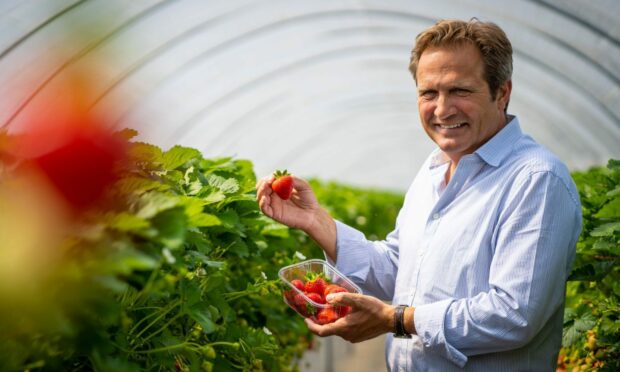Supermarket giant M&S and AgriSound are teaming up with Arbroath farmer Lochy Porter from East Seaton to offer new technology to enhance pollinator activity on Scottish farms.
Following on from successful trials which took place in 2022, 18 additional farms have recently been added to the M&S and AgriSound partnership across Scotland and the UK.
Lochy Porter, owner of East Seaton Farm, said pollinators play a vital role in helping us deliver the best quality produce we can at the farm so we’re keen to see the impact AgriSound technology has on activity.
“With so many current environmental challenges, it’s more important than ever to understand pollinators better,” he said.
“If we can attract more pollinators to our farm, this will be a huge success.”
At East Seaton Farm, the sensors will be located in strawberry tunnels destined for M&S Red Diamond.
AgriSound Polly technology allows farmers to track the number of pollinators visiting their farm in real-time and target specific interventions, such as differing wildflower densities for improving numbers and yields and quality of crops, as well as benefitting the wider environment.
Casey Woodward, founder and CEO of AgriSound, said: “The development of our Polly devices has taken years of dedicated research and it is really exciting to see our technology continuing to deliver unique insights into pollinator activity. I look forward to working closely with the Select Farmers to help protect local pollinator communities.”
The collaboration is part of M&S’ Farming with Nature programme, launched in 2021 to support the retailer’s Select Farmers to become more resilient to environmental challenges spanning climate change and biodiversity loss.
Andrew Clappen, technical director at M&S Food, said: “Improving biodiversity is at the forefront of our plans to help farmers become more resilient to the impact of climate change.
“Pollinators are the unsung heroes of British farming – helping to improve yields and quality while benefitting the wider environment. We’re also working closely with farmers on land use and different wildflower mixes to boost pollinator numbers, alongside crop health and pest management.”
